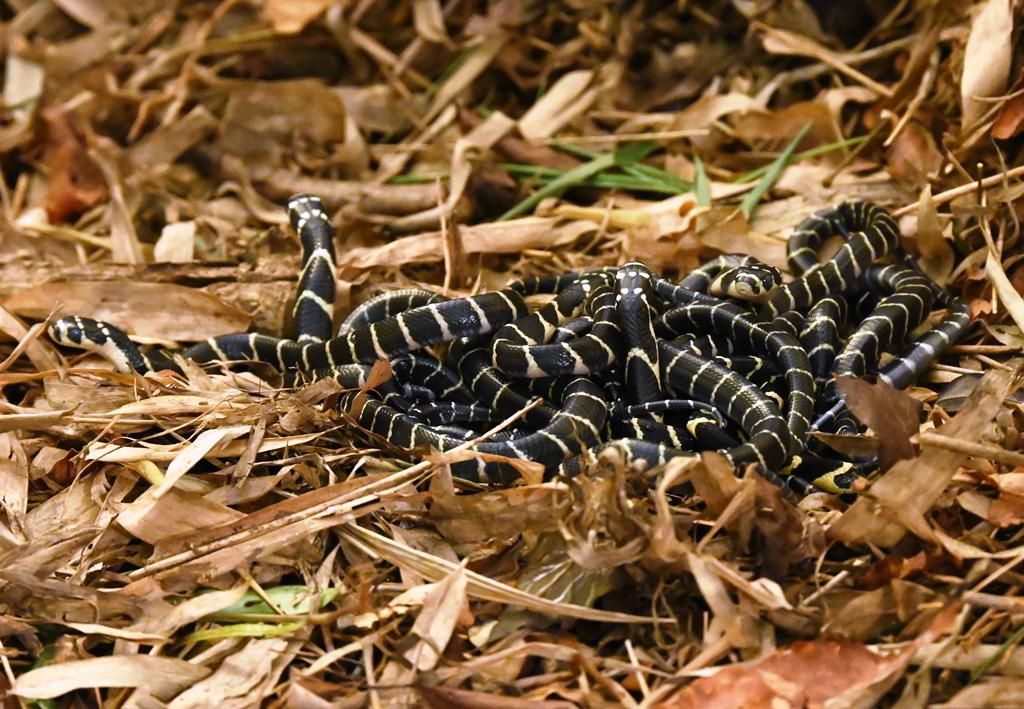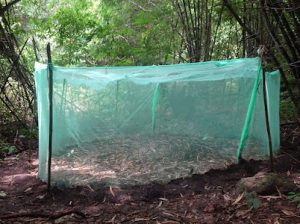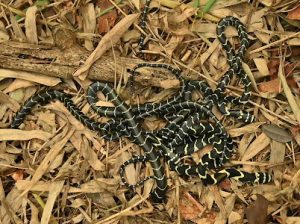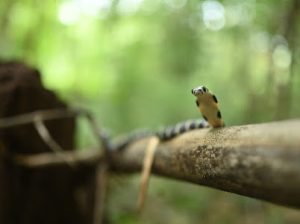The world's longest venomous snake, the king cobra is a vulnerable species according to IUCN, and is facing threats in the Eastern Ghats.

The baby king cobras released in the Eastern Ghats. (Supplied)
The right kind of people can move mountains for what they want, goes the idiom. These conservationists did somewhat that, when their efforts moved a portion of the Eastern Ghats from being classified as a disappearing abode of the king cobra — the longest venomous snake in the world — to the road to becoming a future habitat where the reptile may thrive.
The portion in question is along Andhra Odisha Border (AOB), which is known to be fatal for most animals, thanks to the king cobra, which — despite everything else — is important to maintain the local ecology as it preys on other snakes.
Listed as vulnerable species on the IUCN Red List, the king cobra has been facing threats in the Eastern Ghats.
However, thanks to the efforts of some enthusiastic reptile conservationists, these snakes are now being taken care of in the region.
In a milestone of sorts in the Eastern Ghats, a total of 25 little cobras were released into the wild earlier this month after their nest was guarded for over a month by conservationists with some incredible support from local communities.
The reptile conservationists used a mosquito net to guard the nest and the eggs in it for over a month in a tribal hamlet near the Krishnampalem village of the Madugula Mandal in the Anakapalle district of Andhra Pradesh.

Mosquito net used to guard/protect cobra nest. (Supplied)
“People, especially in the villages, don’t know how to deal with a king cobra. They immediately kill the snakes out of fear. There are instances where cobra nests are doused in kerosene and set on fire. That’s how king cobras have been facing a threat in the Eastern Ghats,” Murthy Kantimahanti of the Eastern Ghats Wildlife Society (EGWS) told South First.
The EGWS has been working on the conservation of king cobras in north Andhra Pradesh for a few years now.
Giving details about the EGWS’ more-than-two-month-long operation of guarding the cobra nest, Murthy said tribals who used to kill a cobra or destroy nests as soon as they saw them had informed them about a nest and a female cobra incubating the eggs.
“The tribals with whom we have been working for more than five years had come a long way. Instead of killing the female cobra, they reported the sighting to us. When we rushed to the spot, we found the female cobra sitting on the nest. For almost one month and 10 days, we silently observed the movements of the female cobra. It eventually abandoned the nest,” explained Murthy.
“Then, with the help of local tribals, we arranged a mosquito net so that the nest was protected from natural predators like monitor lizards or mongooses. We also regularly applied anti-termite powder around it to prevent ants and other insects from entering the nest. We also had the support of the state forest department officials,” he added.
After a month or so of the total 30 eggs, 25 hatched.
“These 25 baby snakes came out of the eggs in two batches two days apart. After observing them for a week, we removed the net and released the baby cobras into the wild,” Murthy told South First.

Baby cobras released into wild in eastern ghats (Supplied)
This is the first time in the Eastern Ghats — spread from southwest Bengal to north Tamil Nadu — that such a cobra nest protection effort was taken up.
Murthy had taken the help of an American-Indian herpetologist and wildlife conservationist Romulus Whitaker, who is also the founder of the Madras Snake Park, in protecting the cobra nest.
Murthy said it was in fact Romulus’ suggestion to protect the nest with a mosquito net.
A couple of local tribals were also engaged to check the condition of the nest daily.
“After releasing the baby cobras, we looked into the nest. It was like an incubation chamber covered with bamboo leaves. We could see the shed skin near the nest,” explained Murthy.
Unlike in the Western Ghats, cobra conservation in the Eastern Ghats was not given importance until recently.
Extensive work has been done in the Western Ghats on king cobras, especially by the King Cobra Conservancy (KCC) Project of the Agumbe Rainforest Research Station (ARRS).
Murthy said outreach and awareness programmes among tribals and villagers play an important role in king cobra conservation efforts.
“We have now started reporting about king cobras whenever we see them. It was not the case until a few years ago. Local tribes were hostile to these snakes,” Prasad V from Madugula told South First.
When confronted, king cobras quickly attempt to escape and avoid confrontation. However, if continuously provoked, they can be highly aggressive.

Baby cobra in eastern ghats (Supplied)
Murthy and his colleagues, who had done the mapping of problematic sites for king cobras in the Eastern Ghats, said one village close to Chodavaram in Vizag district alone had seen at least eight king cobras killed in one year alone.
He also exhorted the need to increase the grade of king cobras on the IUCN Red List.
The average lifespan of a wild king cobra is about 20 years, and each snake typically weighs about 6 kg.
King cobras are able to detect moving prey almost 100 m (330 ft) away, and are capable of delivering a fatal bite.
The victim may receive a large quantity of venom, with a dose of 200-500 mg.

Apr 25, 2024

Apr 25, 2024

Apr 25, 2024

Apr 25, 2024

Apr 25, 2024

Apr 24, 2024